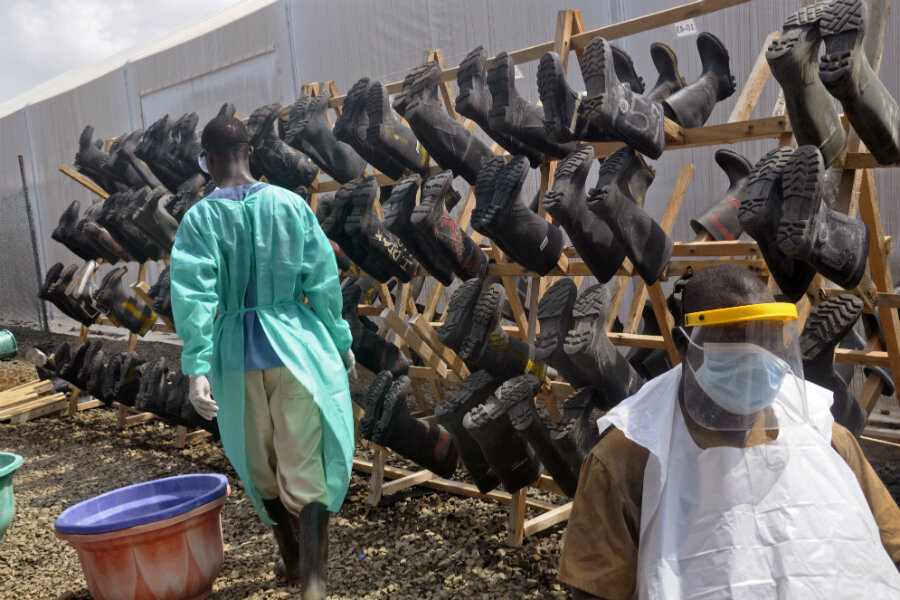US foreign aid cuts: what could impact be?
Loading...
| Paris
When President Donald Trump’s budget director, Mick Mulvaney, presented the outlines of the new US administration’s first budget last month, he made no bones about its purpose.
“This is a hard power budget. It is not a soft power budget,” he told reporters, referring to Mr. Trump’s preference for military firepower over the influence he might wield through development aid.
Now the rest of the world is getting a glimpse of just what that will mean. A leaked State Department budget document lays out proposals for a 30.8 percent cut in development aid and plans to sharply cut back USAID, America’s premier foreign aid agency, by closing many of its projects.
Even critics of the current US aid program such as Richard Sokolsky, a fellow at the Carnegie Endowment for International Peace in Washington, are shocked. “This is the wrong approach,” he says. “Nobody is asking the right questions about how resources are related to our objectives. They are just taking a meat ax to the aid budget.”
Foreign aid’s critics and advocates have long argued over its usefulness.
There can be no doubt that the developing world has made enormous strides in recent decades; the proportion of the world’s citizens living on less than $1.90 a day has fallen from 42 percent to 11 percent since 1981, according to the World Bank; child mortality has halved in the past 25 years, and the proportion of low and middle income countries rated “not free” has dropped from nearly half to under one-third.
How much of that progress is due to trade and other global forces, and how much is down to aid, is often hard to measure. It will be even harder if the State Department’s Policy, Planning, and Learning office, which monitors and evaluates aid projects so as to make aid more effective, loses 44.2 percent of its funding, as planned according to the budget document.
The State Department refused to comment on the leaked figures.
“Some people in the Trump administration see foreign aid as a charity giveaway; they think we get nothing from it and that it is a waste of money,” says one former State Department official who once worked on aid issues. “Some of it is, but it doesn’t have to be; we can make better use of resources if we align them with US strategic interests.”
A pillar of international presence
The planned cuts would not make much difference to the nation’s overall budget for fiscal year 2018, which Congress must approve by Oct. 31. Foreign assistance – including military aid - makes up just 1 percent of the total US budget, and the cuts would save about 0.15 percent of overall US government spending.
They would be felt much more keenly elsewhere in the world, though. Sierra Leone, for example, the 171st poorest country in the world out of 187 countries, according to the IMF, and still recovering from the Ebola outbreak, has been struck off the list of US aid recipients altogether.
“There is no rhyme or reason to the cuts,” says Tom Hart, director of “One,” a Washington-based campaign group focused on eradicating extreme poverty. At a time when Yemen, Somalia, South Sudan, and Nigeria are on the brink of famine, according to UN warnings, the budget would take 68 percent out of the budget of USAID’s food security bureau, he points out.
Development aid has traditionally been seen as one of the three pillars of Washington’s international presence, along with defense and diplomacy.
Visiting Capitol Hill in 2013, Defense Secretary James Mattis, then chief of US Central Command, told lawmakers that “if you don’t fund the State Department fully, then I need to buy more ammunition. It’s a cost-benefit ratio.”
That sort of thinking does not seem to have prevailed this year in the White House Office of Management and Budget, where the aid budget appears to have been drawn up, since few of the top jobs in the State Department or USAID have yet been filled.
Direct to government?
A clear trend in the leaked figures is to take money away from USAID programs, sometimes replacing it – at least partially – with Economic Support Funds (ESF) managed by the State Department.
While USAID channels most of its money through non-governmental organizations working on development goals such as boosting agricultural output, or improving health and education and governance, ESF goes mainly to recipient governments that can do pretty much what they like with it.
“ESF objectives are driven by [US] strategic considerations, not poverty reduction,” says Scott Morris, an analyst at the Center for Global Development, a Washington-based think tank. It is a convenient way to keep friendly governments onside in important parts of the world.
Foreign aid advocates are hoping that Congress, when called upon to approve the budget, will balk at giving the administration such large amounts of unaccountable money, and that it will restore at least some of the development aid.
As it stands, says Mr. Hart, the foreign assistance budget “is tragic. It removes both a key instrument of national security, and one of the best reflections of American values.”








